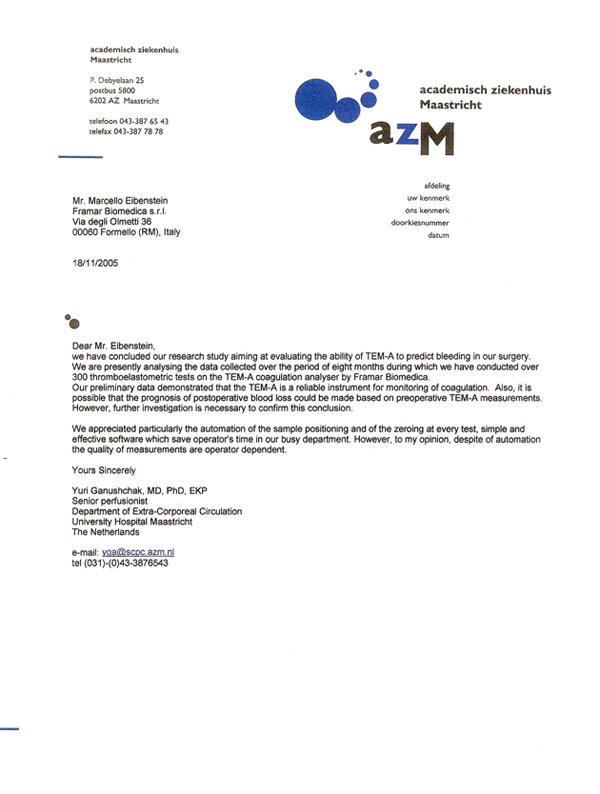Diana Van Dijk, Y.Ganushchak, D S de Jong; University Hospital Maastricht, Maastricht, The Netherlands. Presented at 12th European Congress on Extracorporeal Circulation Technology; Kiev, June 7-8, 2007.
Objectives:
Cardiopulmonary bypass (CPB) can influence the coagulation status of patients. Donation of blood products to patient has certain risks and economical consequences. The aim of this study is to see whether the coagulation status during CPB can predict the amount of post CPB blood loss.
Patients and Methods:
26 patients (20 male and 6 female) undergoing a first time CABG-surgery were investigated preoperatively, during the operation and postoperatively until 20 hrs. The coagulation assays studied included heamatocrit, fibrinogen, Pt/INR, activated partial thromboplastin time (aPTT), platelet count and thromboelastograph (TEM-A) values. The values obtained from the TEM-A were: R phase (indicative of lack of coagulation factors, heparin appearance or thrombin formation disorders), K phase (indicative of fibrinogenesis), α (indicative of fibrinogenesis and platelet function), A10 and A20 (two point of time for easy compare of amplitudes after 10 and 20 minutes test run) and MA phase (providing information on clot stability and platelet function).
The patients were divided into two equal sized groups based upon 2 hrs blood loss, 4 hrs blood loss and 20 hrs blood loss using the median.
Comparisons were made between pre-, per- and postoperative measurements using SPSS 11.5 ANOVA-tests. Prediction was done using SPSS11.5 binary logistic backwards regression.
Results:
In the groups based upon 2 hrs blood loss we saw significant differences in platelet count and thromboelastograph values. There were no differences in the patients’ characteristics except for the weight. The patients who bled more than the median (200 ml) were lighter (mean ..kg) than those who bled less than the median.
Those who bled more than 200 ml in 2 hours postoperative had a significant higher platelet count (P< 0.02) significant higher α (p<0.04) and significant higher A10 (p<0.02) at the beginning of the perfusion than the group patients who bled less than 200 ml. There were no differences between the two groups in all the other parameters. There was no significant difference in the use of blood products between both groups. No differences were found in the groups based upon 4 hrs blood loss and 20 hrs blood loss.
Conclusion:
By using the platelet count and the amplitude provided by the TEM-A taken after ten minutes of the beginning of the CPB xxxxx it is possible to predict blood loss after an operation with the use of CPB. This prediction can be made with a sensitivity of 84,6% and a specificity of 84,6%.

